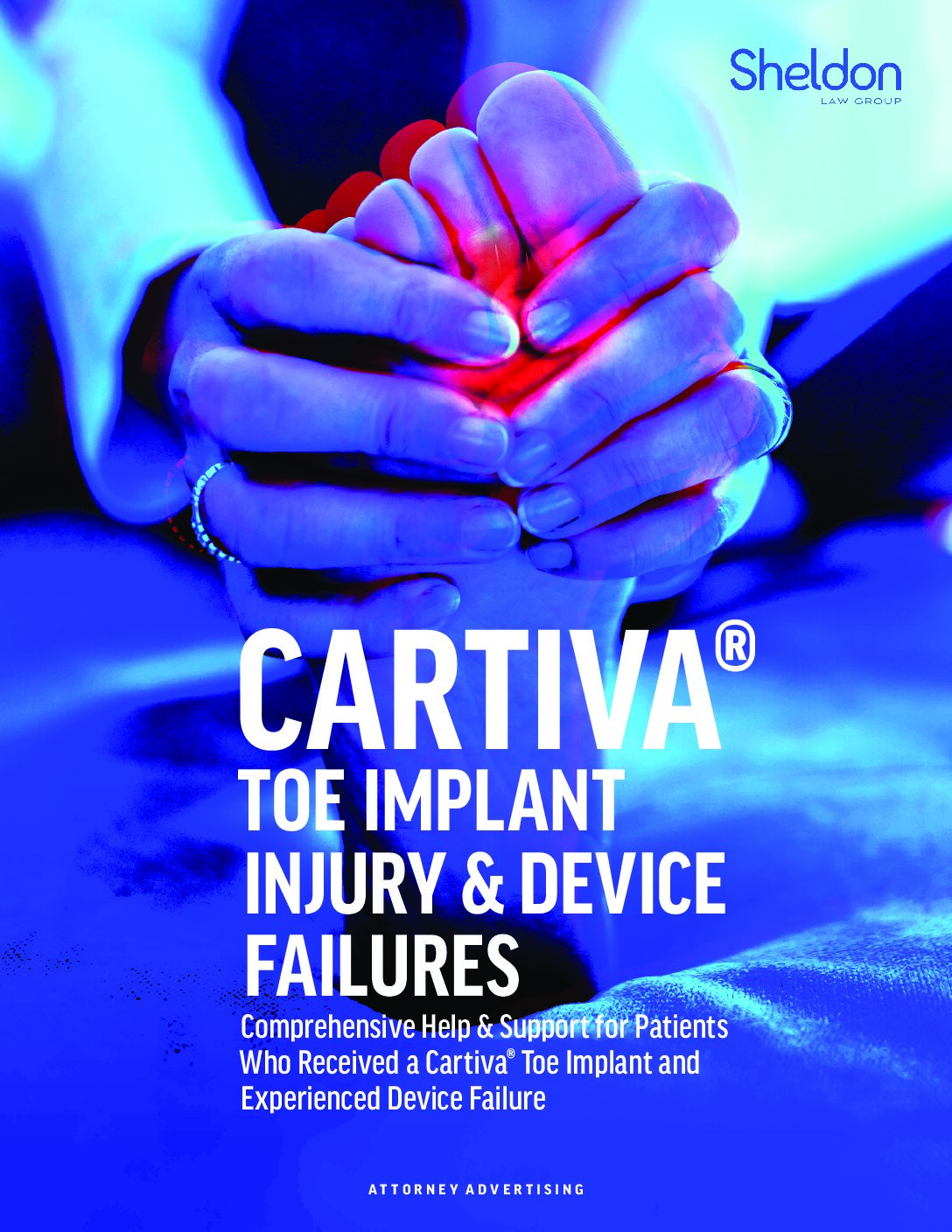Frequently Asked Medical Questions about Cartiva Big Toe Implants
Arthritis of the big toe joint affects thousands of people every year and where patients used to have limited options, the Cartiva toe implant aimed to change all that. Here we answer some frequent questions about big toe surgery for arthritis and Cartiva implants.
Get A 100% Free CASE EvaluationQ: What are Cartiva Toe Implants?
- A: Cartiva Toe Implants are synthetic cartilage implants that are designed to replace the damaged cartilage in the big toe joint. They are made from polyvinyl alcohol (PVA), a material that mimics the properties of natural cartilage. They are used to treat arthritis of the big toe, also known as hallux rigidus, which causes pain and stiffness in the toe.
Q: How are Cartiva Toe Implants inserted?
- A: Cartiva Toe Implants are inserted through a small incision on the top of the toe. The surgeon removes the damaged cartilage and creates a socket in the bone to fit the implant. The implant is then pressed into the socket and secured with bone cement. The incision is closed with stitches and a bandage is applied.
Q: What are the benefits of Cartiva Toe Implants?
- A: Cartiva Toe Implants aim to reduce pain and improve function and mobility of the big toe joint. Unlike fusion surgery, which permanently locks the joint, Cartiva Toe Implants preserve the natural movement of the toe. They are marketed as having a shorter recovery time and fewer complications than fusion surgery.
Q: What are the risks of Cartiva Toe Implants?
- A: Cartiva Toe Implants have some potential risks, such as infection, inflammation, implant loosening, implant wear, implant fracture, implant migration, bone loss, nerve damage, toe deformity, residual pain, reduced range of motion, need for revision surgery or fusion surgery.
Q: How effective are Cartiva Toe Implants?
- A: The short-term outcomes of Cartiva surgery for MTP arthropathy were investigated in a recent study published in Cureus. The results were mixed and worrisome. The study showed that some patients had better function and resumed their normal activities within two years, but more than half of them still had pain at the final follow-up. Furthermore, almost half (45.5%) of the patients had complications, such as infections, swelling, and nerve problems. Eighteen percent of the patients needed more surgery, including some who had to undergo arthrodesis revision.
If You Had to Have Additional Surgery After Receiving a Cartiva Toe Implant, We Can Help.
If you have suffered from complications after receiving a Cartiva Toe Implant, contact us now. We are fighting to protect the rights of patients allegedly injured by Cartiva toe implants and hold the device makers fully accountable for putting profits above the health and well-being of patients.
Patients who received a Cartiva toe implant and were forced to have revision surgery to remove or replace the device, may be entitled to significant financial compensation. Contact us now to learn more about your rights and whether you are entitled to compensation.

